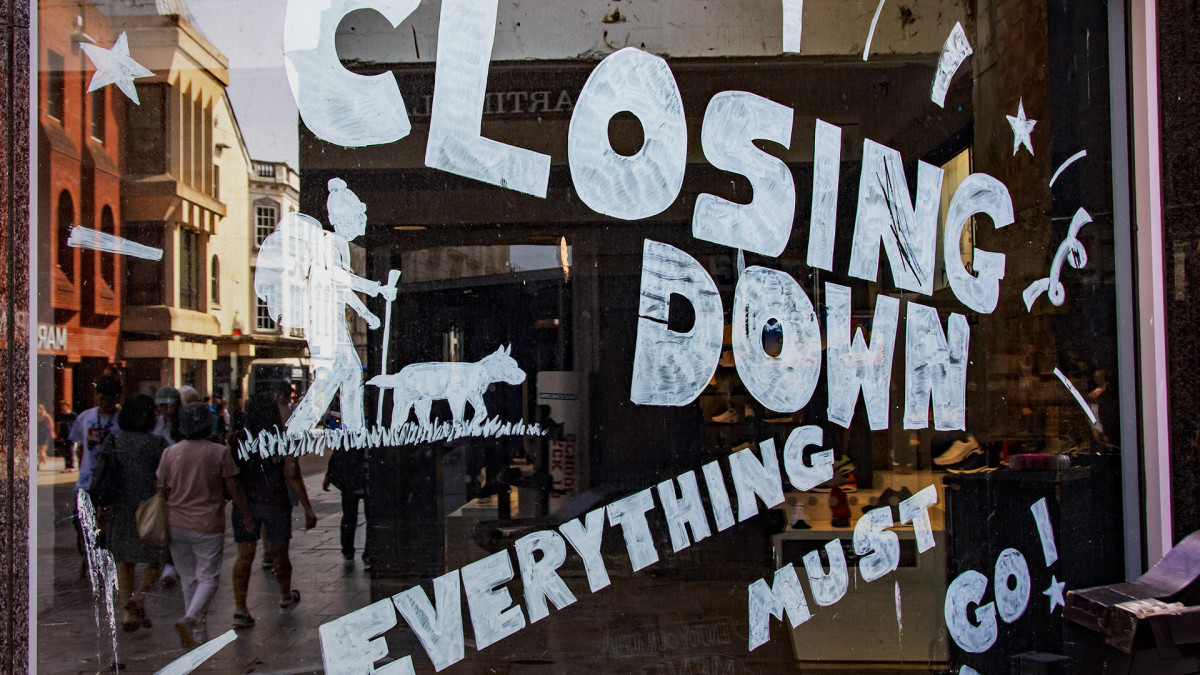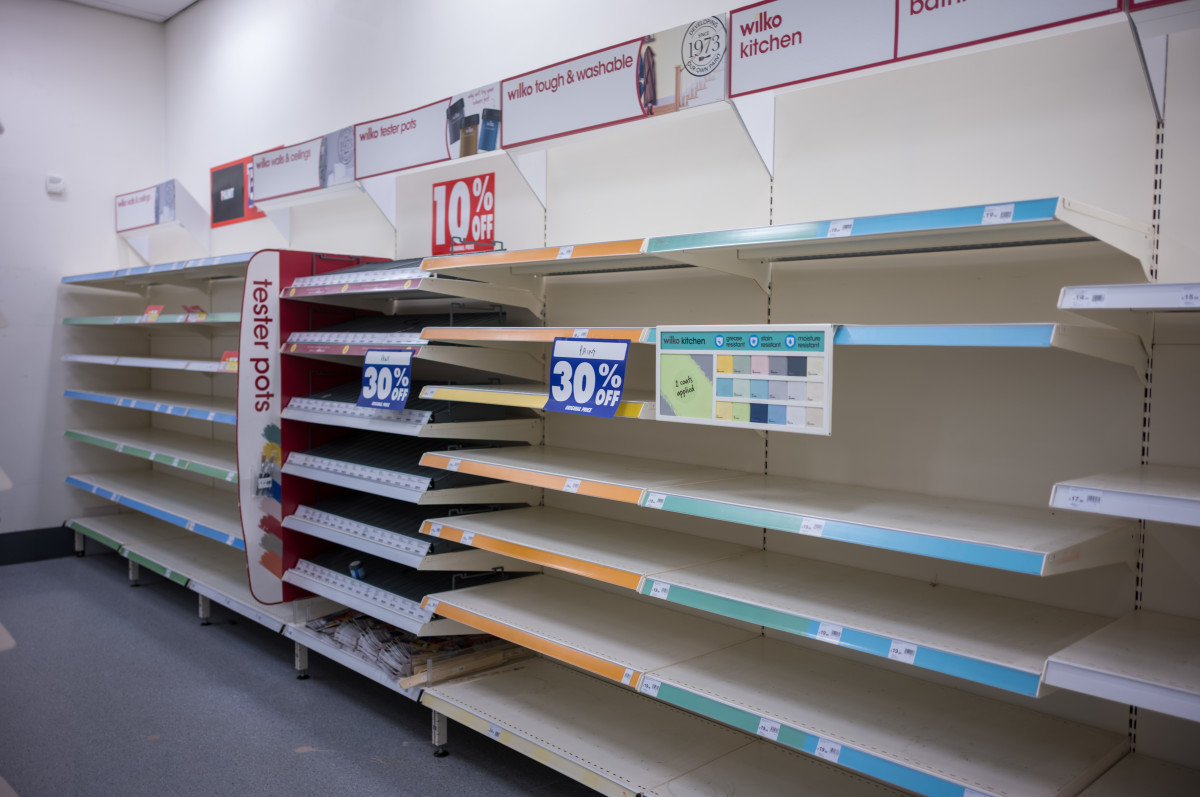
Brick-and-mortar retail chains have experienced a tough run this decade.
E-commerce was already chipping away at customer bases before Covid struck, causing the shift to online retail to accelerate. Then, inflation and the resulting increase in interest rates dealt a blow to consumers' budgets, causing many to shift spending from discretionary purchases to necessities.
The reality is many customers lost to online retail giants, such as Amazon, will never return, causing once-popular retail chains to fold.
Given the high-profile failures of Bed Bath & Beyond and Christmas Tree Shops, we're already seeing this dynamic play out.
The list of retailers seeking to restructure via a Chapter 11 bankruptcy or forced to liquidate in Chapter 7 bankruptcy has grown, and it could be about to get a little longer.

Many stores struggle to compete against big retailers
Sears operated 700 stores when it filed for bankruptcy in 2018, but it operates just 13 stores after emerging from Chapter 11 bankruptcy in 2022.
Bed Bath & Beyond customers could visit 1,500 stores in 2018, but it had fewer than 300 locations when it went bankrupt in 2023, and all of its stores are closed today.
Christmas Tree Shops operated more than 80 stores, all closed last year when it filed for bankruptcy.
There's plenty of blame to go around for those retailers, but much lands at the feet of big retail store giants like Walmart and Costco Wholesale and e-commerce Goliath Amazon.
Over the past decade, Walmart’s annual revenue has jumped from less than $500 billion to $648 billion. Costco’s sales have doubled, with Wall Street forecasts topping $250 billion this fiscal year. And Amazon’s sales have risen remarkably, climbing from $74 billion to an expected $641 billion this year.
In the fourth quarter, industrywide e-commerce sales totaled $285.2 billion, up 8%. Online retail now accounts for over 15% of all retail sales, according to the U.S. Census Bureau.
Growing sales at these retail behemoths and increasing e-commerce sales have largely happened at the expense of smaller brick-and-mortar retailers unable to negotiate prices low enough to keep the lights on.
A popular retailer fights for its survival
Joann Fabrics (JOAN) has been a favorite arts and crafts retailer for 80 years, operating 831 stores in 49 states.
However, like many retail store chains, it has struggled to overcome shifting sales trends toward online retailers like Amazon and larger superstores like Walmart while managing rising interest payments on billions of dollars in debt.
Related: Essential retailer in bankruptcy closes more stores
Sales at the arts and crafts store fell 4% to $540 million in its most recently reported quarter ending October, while its loss per share ballooned to $0.21 from a six-cent per-share profit in the same quarter the previous year.
Given the losses, Joann embarked on a cost-cutting plan to get itself back into the black by reducing costs by up to $225 million. However, those efforts may not be enough. Behind the scenes, management has been discussing whether bankruptcy will be necessary to get its financial house in order, according to Bloomberg.
As of Oct. 31, the company owed over $2 billion, including $181 million in current debt, yet had just $28 million in cash and cash equivalents.
The company's debt has become increasingly harder to manage since interest rates have risen since early 2022. Joann's quarterly interest expense ballooned to $28 million in October from $22 million exiting January 2023.
The company's financial situation is a major reason its shares have dropped 85% in the past year to about $0.50 per share.
Joann could file for bankruptcy soon
A Chapter 11 bankruptcy could provide Joann with wiggle room necessary to reshape its business and better align costs with sales.
Retailers often seek out Chapter 11 bankruptcy protection to restructure because it gives them the necessary cover to renegotiate debts with lenders and landlords, exit leases, and close stores.
More retail stock news:
- Costco unveils executive change that could trigger membership-fee boost
- Walmart makes a surprise move that investors will love
- Analysts revamp Best Buy stock price targets after earnings
According to Bloomberg's reporting, Joann's filing would involve its lenders taking over the business, a possibility that could significantly reshape the business.
Last month, Bloomberg said that Joann was speaking with lenders to restructure its debt and boost its cash on hand to give it more flexibility. It's unclear if those talks fell through, leading Joann to consider the bankruptcy filing instead.
Historically, retailers consider bankruptcy a last resort. Although it allows management to shed costs, Chapter 11 can frustrate vendors, banks, and customers, causing rifts that make it more difficult to survive if the company exits bankruptcy.
A bankruptcy filing by Joann could happen as soon as next week, according to Bloomberg. However, that doesn't necessarily mean all of Joann's stores will close if it happens. Retailers can continue operating their stores while they put their restructuring plans in place during a Chapter 11 bankruptcy.
Related: Veteran fund manager picks favorite stocks for 2024







